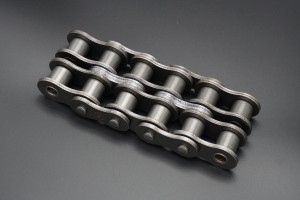Roller chains are an important component in a variety of mechanical applications. They transmit power and provide flexibility, durability and efficiency. Each roller chain is designed to withstand specific loads and conditions, varying in size, strength and function. Today, our focus will be on two specific types: 10B roller chain and 50 roller chain. Let’s dive into the fascinating world of chains and find out if these two chains are really similar.
Know the basics:
Before diving into the comparison, it is crucial to understand some key aspects of roller chains. “Roller chain” is a term used to denote a series of linked cylindrical rollers connected by metal plates called “links”. These chains are designed to engage sprockets to transfer power and motion between two points.
Size difference:
The main difference between 10B and 50 roller chains is size. The numerical denomination of a roller chain represents its pitch, which is the distance between each roller pin. For example, in a 10B roller chain, the pitch is 5/8 inch (15.875 mm), while in a 50 roller chain, the pitch is 5/8 inch (15.875 mm) – seemingly the same size.
Learn about chain size standards:
Despite having the same pitch size, 10B and 50 roller chains are of different size standards. 10B chains follow the British Standard (BS) dimensional conventions, while 50 roller chains follow the American National Standards Institute (ANSI) system. Therefore, these chains vary in manufacturing tolerances, dimensions and load capacity.
Engineering considerations:
Differences in manufacturing standards can significantly affect roller chain strength and performance. ANSI standard chains generally have larger plate sizes, which provide higher tensile strength and higher load capacity. In comparison, BS counterparts have tighter manufacturing tolerances, resulting in better overall performance in terms of wear resistance, fatigue strength and impact resistance.
Interchangeability factor:
Although 10B roller chain and 50 roller chain may have the same pitch, they are not interchangeable due to dimensional differences. Attempting substitutions without regard to manufacturing standards can lead to premature chain failure, mechanical failure and safety hazards. Therefore, it is crucial to follow the proper specifications when selecting a roller chain and consult an expert to ensure compatibility.
Application-specific considerations:
To determine which chain is right for a particular application, factors such as load, speed, environmental conditions and desired service life must be evaluated. It is highly recommended to consult engineering handbooks, manufacturers catalogs or contact an industry expert.
In summary, while 10B roller chain and 50 roller chain may have seemingly the same pitch measurement of 5/8 inch (15.875 mm), they are of different size standards. 10B chains follow the British Standard (BS) sizing system, while 50 chains follow the American National Standards Institute (ANSI) system. These variations in manufacturing standards result in differences in dimensional parameters, load capacity and overall performance. Therefore, it is critical to accurately identify and use the proper roller chain for a specific application to ensure efficient and reliable performance.
Remember that the roller chain you choose can significantly affect the functionality and lifespan of your machine, so make an informed decision and make safety and performance a top priority.
Post time: Aug-04-2023

